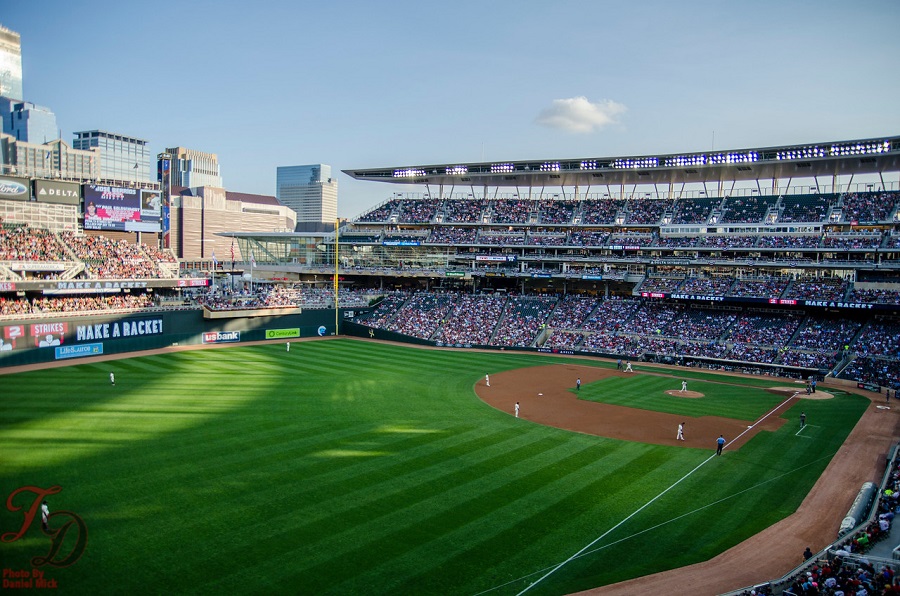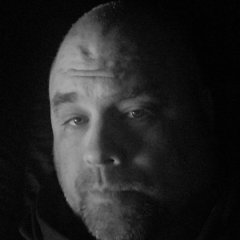
Twins Video
The 1990 Twins finished in last place in the American League, but some young pitchers, both starters and in the bullpen, were working some valuable innings and then took off in that magical 1991 season. And even during the years that the Twins were really struggling, some pitchers were getting some quality innings that they carried into the new century.
While a couple of one-season Twins could have made this list and given it more clout, the other names make for more conversation. So, enjoy this list and then discuss in the comments below.
SP - Brad Radke (1995-1999)
164 games, 163 starts, 66-68 with 4.30 ERA in 1,085 innings. 664 K. 239 BB.
Radke was the team’s eighth-round draft pick out of high school in 1991. He made his debut early in the 1995 season and pitched 181 innings. The next six seasons, he topped 213 innings each season. The first two years, he led the league in home runs allowed (“Real as Radke”). But in 1997, he broke out and went 20-10 for a Twins team that won just 68 games. In June, July and into August that year, he had a stretch in which he won 12 straight starts. He finished third in Cy Young voting that year. While his 4.30 ERA over this time frame doesn’t sound great, it was 14% better than average during that era.
SP - Kevin Tapani (1990-1995)
176 games, 175 starts, 73-61 with 4.06 ERA in 1,138 2/3 innings. 703 K. 247 BB.
Tapani came to the Twins late in the 1989 season in the Frank Viola trade and became a mainstay in the Twins rotation through the first half of the 1990s. In 1990, he went 12-8 and finished fifth in the Rookie of the Year voting. He went 16-9 with a 2.99 ERA in 244 innings in helping the Twins to their 1991 World Series championship. He won 16 more games in 1992 despite an ERA of 3.97. He was traded to the Dodgers late in the 1995 season and pitched in the big leagues through the 2001 season.
SP - Scott Erickson (1990-1995)
155 games, 153 starts, 61-60 with 4.22 ERA in 979 1/3 innings. 527 K. 367 BB.
Erickson was the Twins fourth-round pick in 1989 out of the University of Arizona. He made his MLB debut just a year later and went 8-4 with a 2.87 ERA in 113 innings for the 1990 Twins. He led the league with 20 wins and posted a 3.18 ERA in 204 innings for the 1991 Twins, finishing second in Cy Young voting. He was a solid 13-12 in 1992. But as the Twins went down hill, Erickson’s performance went downhill (or vice versa). He lost a league-leading 19 games with a 5.19 ERA in 1993, got worse in 1994 and was traded midway through the 1995 season. He fought injuries the rest of his career, but he certainly always showed the kind of stuff to keep getting opportunities.
SP - Bob Tewksbury (1997-98)
52 games, 51 starts, 15-26 with 4.49 ERA in 317 innings. 152 K. 51 BB.
When Tewksbury joined the Twins before the 1997 season, he already was a veteran of 11 MLB seasons. He had been an All-Star with the Cardinals in 1992. He provided the Twins with some consistency and veteran presence. Simply, he didn’t walk many, struck out very few and took the ball. His ERA over those two seasons was 5% better than average.
SP - Eric Milton (1998-1999)
66 games, 66 starts, 15-25 with 5.01 ERA in 378 2/3 innings. 270 K. 133 BB.
Milton came to the Twins from the Yankees before the 1998 season in the Chuck Knoblauch trade. He had been a first-round pick by the pinstripes. He surprised many when he made the Twins Opening Day roster right away in 1998. After going 8-14 with a 5.64 ERA as a rookie, Milton went 7-11 with a 4.49 ERA in 206 1/3 innings his sophomore season. That ERA was 13% better than league average. While he wasn’t great, Milton provided some glimpses at what he could be. In late July, he threw a complete game, three-hit shutout against the Angels. And, you may remember his September start against the Angels on a Saturday morning in which he no-hit the Angels with 13 strikeouts.
In keeping consistent with previous decades, I did not include any players who were only with the team for one season in the decade. In the 1970s, that meant that Jerry Koosman didn’t make the list. In the 1990s, Jack Morris’s 1991 and John Smiley’s 1992 seasons certainly warrant mention.
RP - Rick Aguilera (1990-1999)
479 games, 19 starts, 37-42 with 254 saves and a 3.54 ERA in 618 1/3 innings. 529 K. 162 BB.
“Aggy” spent parts of five seasons with the New York Mets, even winning a World Series title in 1986. He was traded to the Twins in the 1989 Frank Viola deal. While he was very clear about wanting to be a starter, his work as a closer was terrific and led to being inducted into the Twins Hall of Fame. He posted sub-3.00 ERAs each season from 1990 through 1992. He was an All-Star in 1991, 1992 and 1993 for the Twins. He was a huge part of the 1991 championship. Late in 1995, he was traded to the Red Sox, but he chose to come back to the Twins for the 1996 season, again as a starter. In 1997, he was back in the closer role which he kept until a trade to the Cubs late in the 1999 season. He had over 30 saves in six seasons for the Twins. His 254 Twins saves was a franchise high until it was surpassed by Joe Nathan.
RP - Mike Trombley (1992-1999)
360 games, 36 starts, 30-33 with 34 saves and a 4.46 ERA in 641 2/3 innings. 525 K. 243 BB.
Trombley was the Twins 14th-round pick in 1989 out of Duke. He made his debut in August of 1992. He had some opportunities to start, but his best work came out of the Twins bullpen. His best season came in 1996 when he went 5-1 with a 3.01 ERA and six saves in 68 2/3 innings. He also recorded 24 of his Twins saves during the 1999 season. Once he shifted full-time to the bullpen in 1996, he became very good, very consistent. Over those four seasons, his 3.87 ERA was 26% better than the league average ERA.
RP - Greg Swindell (1997-1998)
117 games, 1 start, 10-7 with 3 saves and a 3.61 ERA in 182 innings. 120 K. 43 BB.
Like Tewksbury, Swindell had a lot of big-league service time when the Twins signed him before the 1997 season. He had been an All-Star as a starter in Cleveland, and pitched for several teams. He had recently shifted to the bullpen. In 1997, he worked 115 2/3 innings over 65 games for the Twins, all but one out of the bullpen. He went 7-5 with a 3.58 ERA. He then pitched another 52 games (and 66 1/3 innings) for the Twins before being traded to the Red Sox late in the 1998 season. While it was only about 1.7 seasons with the Twins, his 3.61 ERA was 30% better than league average at that time.
RP - Mark Guthrie (1990-1995)
227 games, 35 starts, 27-23 with 8 saves and a 4.14 ERA in 432 1/3 innings. 350 K. 153 BB.
Guthrie had been the Twins seventh-ound pick in 1987 out of LSU. He made his debut with the Twins in 1989. In 1990, he was still used primarily as a starter. But it wasn’t too long into the 1991 season that Guthrie was moved to the Twins bullpen and he did a really nice job the rest of the season and he was important for the 1991 World Series championship team. 1992 was his best season. In 54 games and 75 innings, he went 2-3 with five saves and a 2.88 ERA. He missed time in 1993 and struggled in 1994 and 1995 when he was traded to the Dodgers where he became very good again. Fun Fact: The Twins used their 40th-round pick in the 2014 draft on high school shortstop Dalton Guthrie. He went unsigned, went to Florida and became the Phillies sixth-round pick in 2017. He spent 2019 with High-A Clearwater.
RP - Carl Willis (1991-1995)
204 games, 0 starts, 20-10 with 11 saves and a 3.65 ERA in 286 1/3 innings. 179 K. 64 BB.
Carl Willis, aka The Big Train, had quite the circuitous route to the Twins, but once he got there, he played a large role in some terrific Twins teams. He made his MLB debut in 1984 with the Tigers and then spent parts of 1984 through 1986 with the Reds. He pitched six games and 12 innings for the White Sox in 1988. Then he didn’t see the big leagues until 1991. The Twins signed him as a 30-year-old before the 1991 season. By late April, the Twins called him up for long relief. By May 8th, he was back in the big leagues for good. Maybe it was his ticks, touching his cap a bunch and other idiosyncrasies, but whatever, it worked. He gained Tom Kelly’s confidence and was used a lot. He went 8-3 with a 2.64 ERA for the 1991 Twins and then pitched in seven games during the postseason, helping the team to the World Series championship. In 1992, he went 7-3 with a 2.72 ERA. He was 3-0 with a 3.10 ERA and five saves in 1993. He struggled after that for a couple of seasons, but his work in the early-90s was quite impressive. He’s also become a well-respected pitching coach since then.
So there you have it, some memorable names, some great moments, many ups and downs, but a fun decade to sift through and remember. What are your thoughts?
Previous Installments
Twins All-Decade Team, the '60s (The Hitters)
Twins All-Decade Team, the '60s (The Pitchers)
Episode 15: Get t o Know the 1960s Twins (with Dave Mona)
Twins All-Decade Team, the '70s (The Hitters)
Twins All-Decade Team, the '70s (The Pitchers)
Episode 16: Get to Know the 1970s Twins (with Patrick Reusse)
Twins All-Decade Team: the '80s (The Hitters)
Twins All-Decade Team: the '80s (The Pitchers)
Episode 17: Get to know the 1980s Twins (with Howard Sinker)
Twins All-Decade Team: the '90s (The Hitters)
Twins All-Decade Team: the '90s (The Pitchers)
MORE FROM TWINS DAILY
— Latest Twins coverage from our writers
— Recent Twins discussion in our forums
— Follow Twins Daily via Twitter, Facebook or email
— Become a Twins Daily Caretaker






Recommended Comments
Join the conversation
You can post now and register later. If you have an account, sign in now to post with your account.
Note: Your post will require moderator approval before it will be visible.